Choosing Rewards for Your Referral Program
The reward is one of the core building blocks of your referral program. Unfortunately, many companies don’t take the proper steps to decide what reward they should offer.
There are many factors you need to consider before choosing your reward. Understanding how to use rewards to motivate users to make a referral is key to a successful program design.
What Users Are You Targeting?
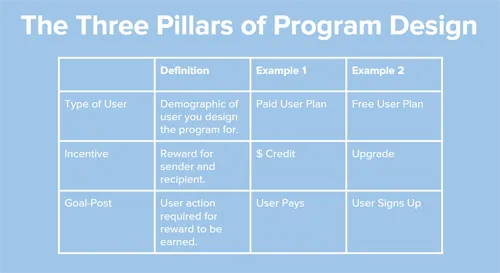
Where are the majority of your users? Are they free? Are they paid? Which type is already making referrals?
You need to collect quantitative and qualitative data on your user types to help guide your reward selection. The value of this exercise is to discover the motivations different types of users have to make a referral.
For Example:
Let’s say you’re trying to give your free users a dollar credit to make a referral.
They aren’t necessarily going to be motivated by that incentive.
Free users for the most part aren’t planning to pay for your service. I would recommend looking into different incentives like feature upgrades or additional seats.
Why Would They Share It?
Gauging interest from a specific set of users is a great way to finalize the type of incentives you use in your program. Many referral programs make common mistakes like picking a small reward or only offering one reward(sender or recipient).
Weak Incentive
When picking a reward you have to consider how much you normally would spend on customer acquisition. Many tech companies spend up to the first 3-4 months revenue to acquire their customers through channels like adwords and display.
Unfortunately, many companies don’t think about their referral program that way and end up deciding on a reward that is insultingly small. We get that every company wants to spend as little as possible to acquire their users. This strategy actually turns users away from engaging with your program and you run the risk of insulting them by offering a weak reward.
If you’re unsure what is too small of a reward try asking your users if they’re interested in the reward before you launch the program. This is a great way to test their reaction to your reward and can give you the feedback necessary to create an enticing reward structure.
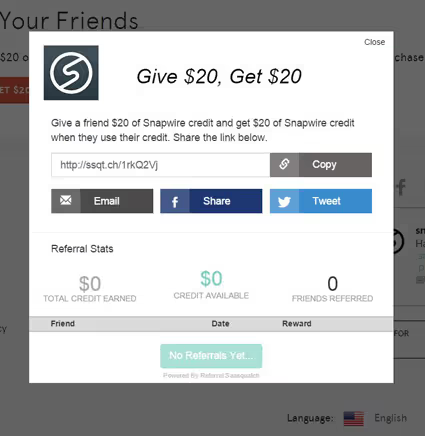
Double Sided vs Single Sided
Just as important as picking an incentive; deciding who to reward is another make or break point for your program. There is a significant change in a users’ motivation when there is only a single sided reward. Most users aren’t interested in being a third-party salesman for your company.
Many of the successful referral programs use a double sided reward structure. These type of rewards put both the sender and recipient on even ground so it doesn’t feel like one party is profiting off of the other. This can increase the senders’ motivation to make a referral and increase the performance of your program.
Instant Gratification
Humans want things and they want them now. Instant gratification is a take on the ‘pleasure principle’ where we don’t want to delay or defer our needs, wants or urges.
This behavior is especially relevant when we think about referral program rewards. Companies can improve the performance of their program when they can give a user something right away. By offering a reward at the first referral you can get more participation and repeat engagement rather than other approaches where they make users get 3-5 signups before they earn anything.
Example:
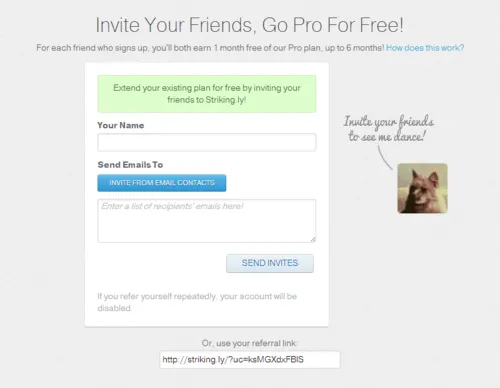
In this example the team at Strikingly encouraged users to participate in the referral program by immediately offering a fun dancing cat video when the user made a referral. This instant gratification tactic helped increase Strikingly’s referral participation rate by 200%. Including this bonus incentive as well as their give 1 month, get 1 month program was enough to sweeten the deal for their users and get users engaged with the program.
What About Cash?
Typically, the industry leans towards companies using anything but cash for their rewards. Examples like upgrades, additional seats and points are all recommended over cash incentives. The evidence is there to support this mindset; Dropbox used Free Space to encourage referral participation. A great example of using your product’s core feature as it’s own currency(MB) to encourage referrals.
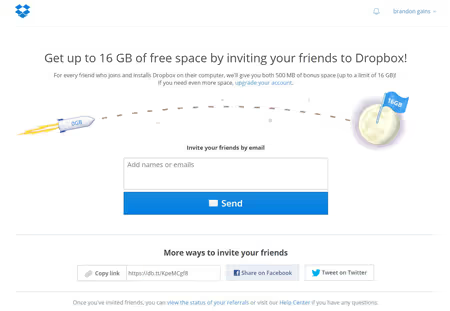
However as Morgan Brown pointed out recently on GrowthHackers.com; there are examples of businesses getting cash incentives to work. In particular he turned our interest towards the referral program of Slack. They offer a hefty $100 double sided reward to encourage referrals. This is much different than other SaaS companies and can work in their favor if their users are more cash-motivated.
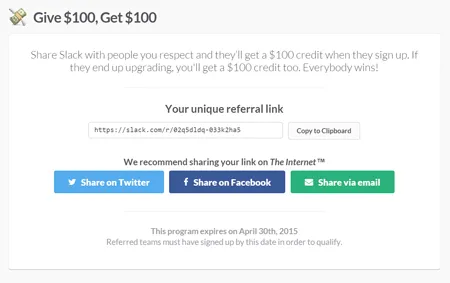
Tl;DR
The key takeaway from this article is to show you the importance of taking steps to carefully select the rewards in your program. Highlighting how important it is to target specific user types and offer double sided rewards. Any successful referral program has looked into what reward works best for their users and how they can motivate users to make a referral.